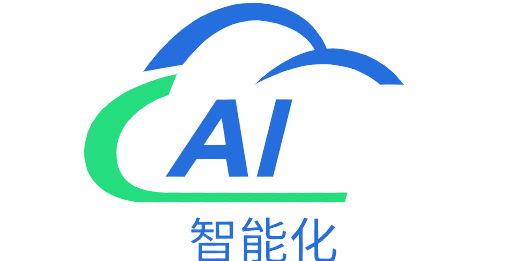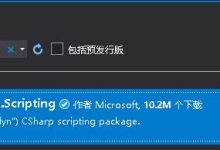近期和几位做嵌入式开发的朋友闲聊过程中,一位朋友抱怨到:这C#太难用了,我想在N个窗体(或者是N个用户组件之间)传递值都搞不定,非得要定义一个全局变量来存储,然后用定时器来刷新值,太Low了。我急切的回答道:这很简单,不就是委托的事嘛。那你来一个示例啊:朋友道。此为这篇博客的起因,所以此篇博客对于有c#开发经验的伙伴们那是小菜一喋。
一、对委托的理解
委托:同一个功能,可以根据不同的场景委托给不同的方法具体执行; 举个栗子:某位美食爱好妹子,通常自己做美食;找到男票后,就男票做美食;换男票后,就第二任男票做美食。我们把这例子委托抽象化:
定义一个委托功能:做美食;规范及流程:输入”食材“,通过”做美食“的委托,输出”美食“。
委托实现之自己做:妹子自己做美食
委托实现之一号男票做:一号男票做美食
委托实现之二号男票做:二号男票做美食
做美食这项功能,被妹子在不同的时间段分配给了不同的对象,虽然妹子,男一,男二做的美食都很好吃,但味道肯定有区别。这就是委托生活化的示例,各位看观了解否(偷笑)。
二、代码实现
上面的示例如何用代码实现,这里就不展示了(真的很简单)。下面我们换一个稍有难度和实际应用的示例,需求说明:主窗体显示一个列表,子窗体增加数据(不关闭子窗体的情况下),主窗体列表自动更新,且第二个子窗体打开后,窗体内的列表也要同时更新。
UI设计:一个主窗体,两个子窗体(A窗体:增加数据,B窗体:显示数据),一个用户组件(列表显示内容)
2.1 EventBus实现

代码如下:
public class EventBus<T>{private List<T> list = new List<T>();public event EventHandler<EventBusArg<List<T>>> EventNotice;public delegate void DelegateItemInfoEvent(List<T> items);public void Add(T item){this.list.Add(item);this.TriggerEventNotice();}public void Remove(T item){this.list.Remove(item);this.TriggerEventNotice();}public List<T> GetAll(){return this.list;}private void TriggerEventNotice(){if (this.EventNotice != null){this.EventNotice.Invoke(this, new EventBusArg<List<T>>(){Data = this.GetAll()});}}}public class EventBusArg<T> : EventArgs{public T Data { get; set; }}
重点:
1. 定义了一个委托类型:DelegateItemInfoEvent(List<T> items)
2. 定义了一个事件对象:EventHandler<EventBusArg<List<T>>>
3. 事件对象的参数必须继承EventArgs对象
4. 事件依赖委托
2.2 主窗体
代码如下:
private EventBus<ItemInfo> eventBus = new EventBus<ItemInfo>();private EventBus<ItemInfo>.DelegateItemInfoEvent FunItem;public Form1(){InitializeComponent();this.eventBus.EventNotice += EventBus_EventNotice;}private void EventBus_EventNotice(object sender, EventBusArg<List<ItemInfo>> e){if (this.ucList1.InvokeRequired){FunItem = new EventBus<ItemInfo>.DelegateItemInfoEvent(RefreshItem);this.ucList1.Invoke(FunItem, e.Data);}else{this.RefreshItem(e.Data);}}private void RefreshItem(List<ItemInfo> item){var ls = this.eventBus.GetAll();this.ucList1.LoadData(ls);}
重点:
1. 捕获事件:this.eventBus.EventNotice += EventBus_EventNotice;
2. 事件处理方法中,需要判断是否为UI线程引发,如果不是,则需要委托来进行切换线程,代码见:private void EventBus_EventNotice(object sender, EventBusArg<List<ItemInfo>> e) 方法
3. 其中FunItem是委托类型的变量,其最终的实现为RefreshItem方法
2.3 A窗体:增加数据
代码如下:
private EventBus<ItemInfo> eventBus;public Form2(EventBus<ItemInfo> eventBus){this.eventBus = eventBus;InitializeComponent();}private void button1_Click(object sender, EventArgs e){//在UI线程this.eventBus.Add(new ItemInfo(){Title = textBox1.Text,Val = Int32.Parse(textBox2.Text)});}private void button2_Click(object sender, EventArgs e){//跨线程Task.Factory.StartNew(() =>{for(var i=10; i < 15; i++){this.eventBus.Add(new ItemInfo(){Title = i.ToString() + \"-Title\",Val = i});}});}
重点:
1. 传入了EventBus对象的实例,此实例与主界面的EventBus实例为同一个【这点很重要,发布和订阅的事件必须在同一实例上】
2. button2_Click事件展示的是跨线程事件,执行此代码,主界面的刷新会走委托
2.4 B窗体:订阅列表显示
代码如下:
private EventBus<ItemInfo> eventBus;public Form3(EventBus<ItemInfo> eventBus){this.eventBus = eventBus;InitializeComponent();this.eventBus.EventNotice += EventBus_EventNotice;}private void EventBus_EventNotice(object sender, EventBusArg<List<ItemInfo>> e){if (this.ucList1.InvokeRequired){var FunItem = new EventBus<ItemInfo>.DelegateItemInfoEvent(RefreshItem);this.ucList1.Invoke(FunItem, e.Data);}else{this.RefreshItem(e.Data);}}private void RefreshItem(List<ItemInfo> item){var ls = this.eventBus.GetAll();this.ucList1.LoadData(ls);}private void Form3_FormClosing(object sender, FormClosingEventArgs e){this.eventBus.EventNotice -= EventBus_EventNotice;}
重点:
1. 事件的订阅与取消订阅,一般情况下可以在关闭窗体时取消订阅
三、回顾
1. 事件依赖委托,事件可以订阅和取消订阅,其订阅就是为事件增加委托。
2. 委托的本质还是方法(或者说是函数),只不过方法变成了一个变量,可以在运行时动态改变
3. 源码下载
 爱站程序员基地
爱站程序员基地
![(原创)[C#] 一步一步自定义拖拽(Drag&Drop)时的鼠标效果:(一)基本原理及基本实现-爱站程序员基地](https://aiznh.com/wp-content/uploads/2022/07/20220721231016-62d9dcd85c40b-220x150.gif)

